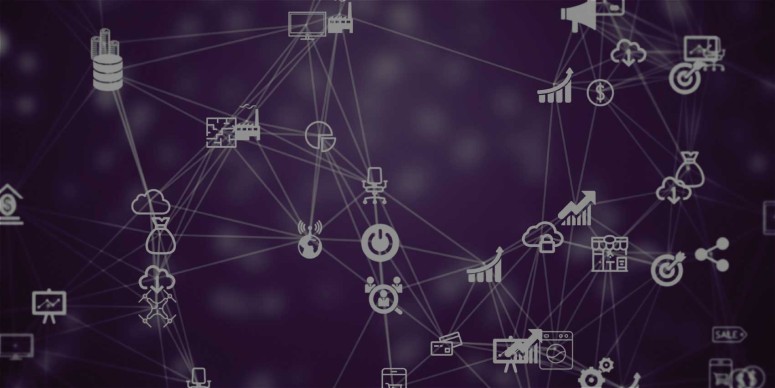In this article, Roberto Barriga, professor of the Global MBA in Digital Business and specialist in Industrial Digital Transformation, describes the Internet of Things (IoT) as one of the driving forces of Industry 4.0. There is a wide variety of technologies that, when connected, become intelligent and, thus,
transform production. The term Industry 4.0 covers the promise of a new industrial revolution, the fourth transformation in the history of the industry.
The definition of Industry 4.0 was first introduced in 2011 at the Hannover Messe Trade fair that was the subject of an Industry 4.0 working group established by the German federal government.
Germany Trade and Invest (GTAI) defines Industry 4.0 as a paradigm shift, which has become possible thanks to the technological advances that constitute an inversion of the logic of the conventional production process. In short, this means that the industrial production machinery no longer "processes" the product, but
the product communicates with the machinery to tell you what to do.
GTAI adds that Industry 4.0 represents "the technological evolution of integrated systems to cybernetic systems", an approach that connects embedded production technologies and intelligent production processes. In other words, Industry 4.0 is a state in which manufacturing systems and the objects they create are not simply connected. They
draw physical information in the digital domain, but they also communicate, analyze, and use it to drive smart action.
Technology teams will clearly understand the possibilities and uses of new technologies if these statements are clear and promoted from the top.
As we can see in the example, the
ambition will define if we do Digital Optimization or Digital Transformation by creating NEW REVENUE and NEW BUSINESS MODELS on top of the ones that the business had before.The physical world has to execute, first, a physical transition to digital and then to physical. To illustrate its concept of Industry 4.0, GTAI uses CPS (Cyber-Physical Systems): technologies that marry the digital and physical worlds, usually through sensors placed on physical devices and networking technologies that collect the resulting data.
This concept is remarkably similar to the IoT (Internet of Things). Industry leaders must understand how production plants' control systems and manufacturing execution systems —also known as operating technologies (OT) and general company functions and capabilities that are synchronized between functional systems— work.
These forms will bring new opportunities and evoke changes in your business. Understanding how different information technologies interact with the physical world is
a good starting point to drive innovation.In manufacturing, the
process of creating information, communication and action is inherent. The result of which is a physical object. The fabrication inevitably begins with information: a design is created in drawing, with design software or by scanning a physical object, creating data. This data is communicated with the machines that execute the design, passing from the digital world to the physical one. Ideally, the data of the creation process (and subsequent use) is captured, causing continuous cycles between the digital and physical world.
We can observe here how the
concepts of Industry 4.0 and the IoT overlap. The notion of IoT has gained prominence in recent years. The importance of connectivity in the creation of products and services and the growing satisfaction among customers and consumers have both played a big part.
Today,
a substantial number of connected technologies is advancing rapidly, including high-quality sensors, more reliable and powerful networks, high-performance computing (HPC), robotics, artificial intelligence and cognitive technologies, and augmented reality. Together,
they can thoroughly change the industry.
Industry 4.0 represents
an integration of IoT and relevant physical technologies, including analytics, additive manufacturing, robotics, HPC, artificial, and cognitive intelligence.Technologies, advanced materials, and augmented reality complete the physical-digital-physical cycle. Industry leaders have
the opportunity to develop improved operational strategies and achieve key business objectives, empowered by enabling technologies that can be deployed at various points in the manufacturing value chain. In the following video, we can see the digital enablers of Industry 4.0.
Take a step further to the manufacturing of the future and lead IoT and Industry 4.0
Roberto Barriga
Professor of the Global MBA in Digital Business
Business Partner & Services Delivery MGR at Almirall
Houcine Hassan
Computer and Systems Informatics Department, Universitat Politècnica de València
